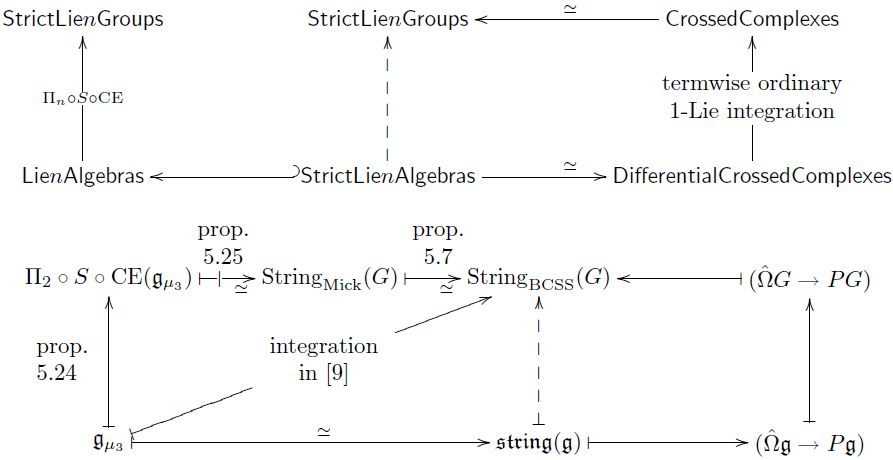Eric Forgy Sandbox


latex2itex
The entry on category is fine, although it is sadly lacking in pictures. All of category theory, which could be called “arrow theory”, is begging to be drawn. The fact there are no pictures is a big hole.
The entry on functor is “ok”, but I am not personally 100% ok with the concept. Evidence of my confusion can be found many places, e.g. functor (discussion), Natural Transformation, etc. For the record, I don’t going around proposing new definitions for fun. I tried hard to understand functor and couldn’t. The way I know I understand something is when I can express it in my own way. That hasn’t happened with functor yet.
The “concept” of what natural transformation is trying to say is clear, but I could not get myself to accept the standard definition. Why should it be restricted to functors sharing the same domain and codomain? That seems to me to illustrate a clear (an unsavory) bias to bigons. A natural transformation should encompass maps between functors with any domain and codomain.
For example, given two categories C and D, we can obtain a functor category [C,D], but the more interesting thing to look at in my opinion is Arr(Cat), i.e. the arrow category of categories. Since the morphisms in Cat are functors, the objects in Arr(Cat) are functors. So I think a better way to think of natural transformations are as morphisms in Arr(Cat). The standard definition of natural transformation would then correspond to “parallel” morphisms in Arr(Cat). In fact, before I started actually looking closer at the definition of natural transformation, this is what I thought they were all this time, i.e. morphisms in Arr(Cat).
My biases come from my starting point in graph theory. Everything to me is a directed graph. A directed 1-edge goes between 0-edges (or nodes). A directed 2-edge goes between directed 1-edges. So as I bump things up in dimension, as I’ve only recently learned, then they way I have been thinking of things would be equivalent to applying “Arr” repeatedly. For example, given 0Cat, we can form Arr(OCat). Does Cat live inside Arr(OCat) somehow?
If I knew how to say this clearly, I wouldn’t need to say it, because there would be no confusion :)
Maybe what I am thinking about is an indexed “Arr” or something. In other words, given a 0-category X (which consists of 0-morphisms), we can form Arr_0(X). The objects of Arr_0(X) are the 0-morphisms of X and morphisms are 1-morphisms, so Arr_0(X) is a 1-category.
Next, given a category C, we can form Arr_1(C). The objects of Arr_1(C) are the morphisms of C
Experiment with mathbf
\mathbf{B}:
\mathbf{BB}:
\mathbf{B{}}:
\mathbf{B }:
\mathbf{ B}:
\mathbf{B.}:
\mathbf{B-}:
\mathbf B:
\boldsymbol{B}:
\boldsymbol{BB}:
\mathbf{B(}:
\mathbf{B^n}:
As I understand it, the problem here is not with Instiki, but with the way that (almost?) every browser (mis)intepretes MathML. I'm just living with it until the browsers grow up. (But Jacques knows more about this; I may have it wrong somehow.) —Toby
Comment: Groupoidifcation Made Easy
Under Construction
I lost some sleep thinking about this homework assignment, i.e. being the first in my block to groupoidify something.
I probably read this somewhere, but don’t remember where…
Let , and consider the span
Thought
So far, I think I can take one step by noticing that constructing discrete differential forms can be thought of as a functor
from the category DiGraph of directed graph to the category DGA of differential graded algebras.
In the process of constructing discrete differential forms from a graph, you will find that actually determines a dual directed space. Hence we have another functor
where DiSpace is the category of directed spaces.
If we note that DiGraph is a subcategory of DiSpace, then we have something that starts to look like it fits into the framework of space and quantity.
An important challenge to overcome is the fact that discrete differential forms are not commutative except in degree 0, i.e. the subalgebra is commutative, but
if either or is not zero.
How to Copy and Paste Material from the n-Cafe and Include Links Back and Forth
Can I make a query box?
I can make a standout box!